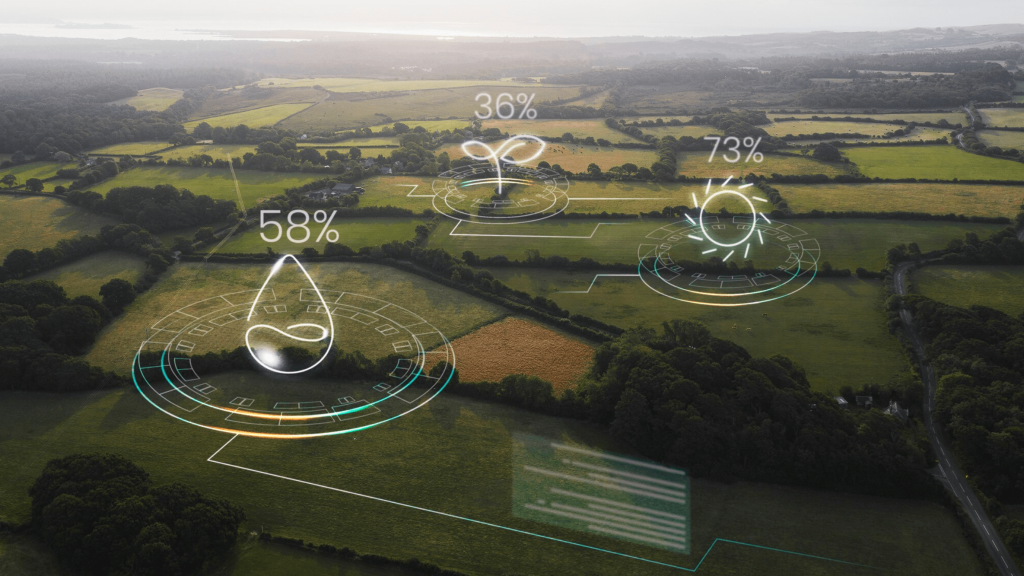The agricultural sector is witnessing a technological revolution, driven by innovations like digital twins and generative AI. These cutting-edge technologies are reshaping traditional farming practices, offering unprecedented opportunities for efficiency, sustainability, and productivity. As farmers and agronomists navigate the complexities of modern agriculture, understanding and implementing these tools can provide significant competitive advantages.

Understanding Digital Twins in Agriculture
Digital twins are virtual replicas of physical assets, processes, or systems that enable real-time monitoring and simulation. In agriculture, digital twins create a mirror image of farming environments, offering insights into crop conditions, soil quality, and weather patterns. This technology allows farmers to visualize the current state of their fields and predict how changes in variables might impact outcomes.
By integrating data from sensors and IoT devices, digital twins provide farmers with a comprehensive understanding of their operations. For example, they can simulate different irrigation strategies to determine the most efficient water usage or model crop growth under various climate scenarios. This ability to predict and optimize farming practices makes digital twins invaluable for precision agriculture.
Generative AI: Transforming Decision-Making and Productivity
Generative AI leverages machine learning algorithms to enhance decision-making processes in agriculture. Unlike traditional AI, which follows set rules, generative AI learns patterns from data, enabling it to generate novel solutions and strategies. This is particularly useful in agriculture, where conditions can be unpredictable and complex.
One of the most significant applications of generative AI is in crop breeding. By analyzing vast amounts of data, AI can identify the most promising genetic combinations, accelerating the development of resilient crop varieties. Additionally, generative AI assists in resource optimization by suggesting the best planting schedules, fertilization plans, and pest control measures based on environmental data.
Real-World Applications and Success Stories
Several pioneering agricultural companies are already harnessing the power of digital twins and generative AI. For instance, a leading farm in California uses digital twins to monitor and manage water resources, significantly reducing waste and improving crop yields. Similarly, a research facility in Europe employs generative AI to develop new wheat strains resistant to changing climate conditions, achieving breakthroughs in both yield and resilience.
These technologies are also being used to enhance supply chain efficiencies. By simulating and optimizing logistics, digital twins help reduce delays and costs in getting products from farm to table. Generative AI contributes by predicting demand trends, enabling farmers to adjust production levels accordingly.
Challenges and Considerations
While the benefits are clear, adopting digital twins and generative AI in agriculture is not without challenges. High upfront costs and the need for advanced technical skills can be barriers for smaller farms. Data privacy and security are also major concerns, as these technologies rely heavily on collecting and analyzing large volumes of information.
Moreover, integrating these technologies into existing farming practices requires change management and a willingness to adapt. Farmers must be open to learning new systems and trusting AI-generated insights, which can sometimes contradict traditional farming wisdom.
The Future of Agriculture with Digital Twins and Generative AI
As digital twins and generative AI continue to evolve, their impact on agriculture is likely to grow even more profound. Future advancements could include more sophisticated predictive models, increased automation, and enhanced interconnectivity between farms and markets. These technologies hold the promise of not only increasing productivity but also contributing to more sustainable and environmentally-friendly farming practices.
For farmers and agronomists, staying informed about these trends is crucial. By embracing digital twins and generative AI, they can improve their agricultural practices, reduce environmental impacts, and ensure food security for a growing global population. As with any technological shift, the key to success will be a combination of innovation, education, and collaboration across the sector.
In conclusion, digital twins and generative AI are set to transform agriculture by providing actionable insights and optimizing farming operations. While challenges remain, the potential benefits far outweigh the hurdles. By harnessing these technologies, the agricultural industry can look forward to a future where farming is more efficient, sustainable, and resilient.
Sources
Intellias — “Digital Twins in Agriculture: A Time Machine for Your Farm”
Bryant University News — “Digital Twinning: Emerging Technology Could Revolutionize Agriculture”
Farm Progress — “Generative AI Set to Fundamentally Change Agriculture”
SoftServe — “Agriculture Innovation with Generative AI”
AgriTech Future — “Editor’s View: Why Generative AI is a Farmer’s New Best Friend”


